 Barrie, Ontario – This spring, 460 students representing 92 five-member teams from across Ontario took part in regional Envirothon workshops and competitions, a team from University of Toronto Schools was crowned as 2025 Ontario Envirothon Champions on May 28. The provincial Envirothon was held at the University of Waterloo from May 25 to 28 and featured 85 students from 17 teams competing to represent Ontario at the National Conservation Foundation (NCF)-Envirothon in Calgary, Alberta this July. “Envirothon is exciting for Forests Canada, and for the students who are gaining a deeper appreciation for nature and honing their STEM skills,” Jess Kaknevicius, CEO, Forests Canada, says. “I impressed by the knowledge and exuberance of this year’s students but also the selflessness and dedication of all the volunteers, teachers and sponsors who make Ontario Envirothon possible.” Ontario Envirothon is an environmentally-themed academic competition that immerses students in hands-on learning and discovery while building STEM (science, technology, engineering and mathematics) skills.
Barrie, Ontario – This spring, 460 students representing 92 five-member teams from across Ontario took part in regional Envirothon workshops and competitions, a team from University of Toronto Schools was crowned as 2025 Ontario Envirothon Champions on May 28. The provincial Envirothon was held at the University of Waterloo from May 25 to 28 and featured 85 students from 17 teams competing to represent Ontario at the National Conservation Foundation (NCF)-Envirothon in Calgary, Alberta this July. “Envirothon is exciting for Forests Canada, and for the students who are gaining a deeper appreciation for nature and honing their STEM skills,” Jess Kaknevicius, CEO, Forests Canada, says. “I impressed by the knowledge and exuberance of this year’s students but also the selflessness and dedication of all the volunteers, teachers and sponsors who make Ontario Envirothon possible.” Ontario Envirothon is an environmentally-themed academic competition that immerses students in hands-on learning and discovery while building STEM (science, technology, engineering and mathematics) skills.
 This month’s news includes:
This month’s news includes: Ten forest firefighters from the Island are in Saskatchewan to help with the wildfire situation in that province. There are also two Island forestry staff in Manitoba assisting with fires there in safety roles. The province continues to be in a good position to respond to forest fire inside or outside of provincial borders. The Government of Prince Edward Island has more than 55 staff trained in wildland firefighting, including foresters, forest technicians, wildlife technicians, and others who have fire response as part of their duties. The team heading to Saskatchewan includes wildfire students who will be embedded with more experienced firefighters to hone their skills.
Ten forest firefighters from the Island are in Saskatchewan to help with the wildfire situation in that province. There are also two Island forestry staff in Manitoba assisting with fires there in safety roles. The province continues to be in a good position to respond to forest fire inside or outside of provincial borders. The Government of Prince Edward Island has more than 55 staff trained in wildland firefighting, including foresters, forest technicians, wildlife technicians, and others who have fire response as part of their duties. The team heading to Saskatchewan includes wildfire students who will be embedded with more experienced firefighters to hone their skills.
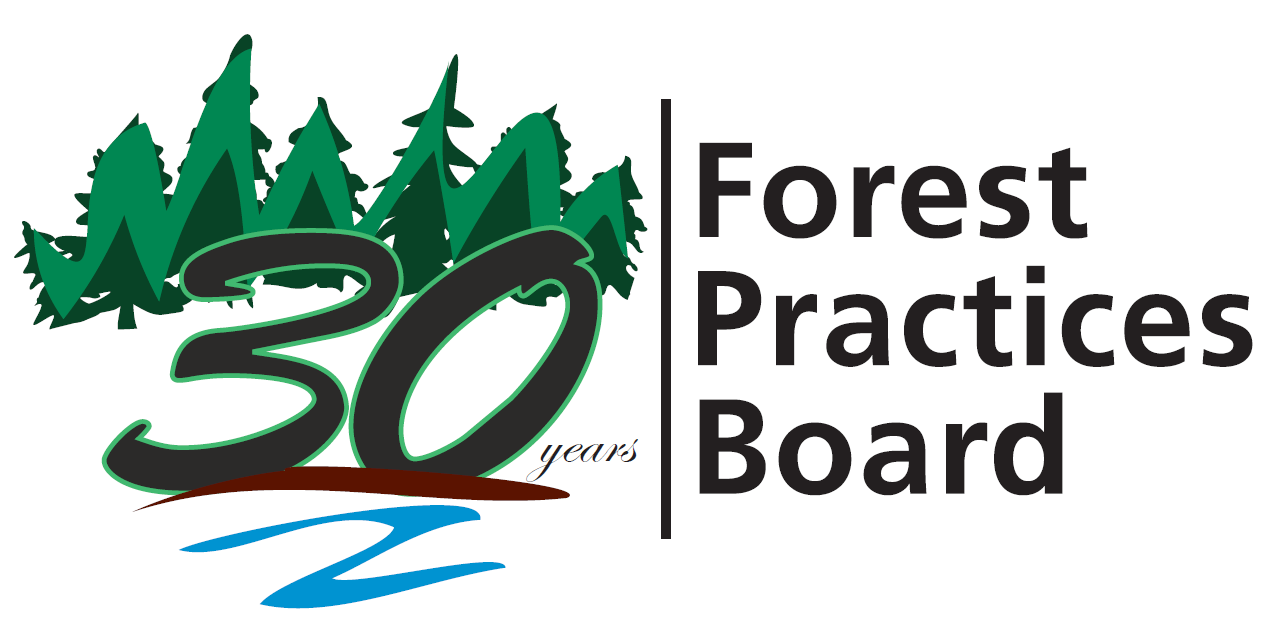
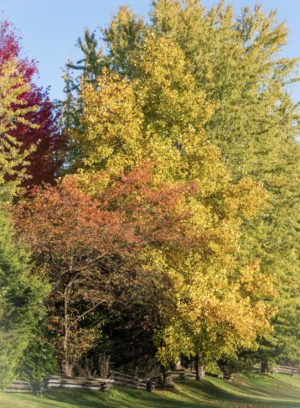 are expected to go up around Edmonton this week to capture the emerald ash borer. The shining and dangerous pest is poised to wreak havoc on Edmonton’s $400-million population of ash trees, and the city has two staffers working full time to detect any advance here as the invasive bug closes in from the west or east into Alberta. “We have the largest percentage of our urban forest canopy in green ash of almost any city in North America,” said Michael Jenkins, senior scientist with the City of Edmonton. Ranging from 8.5 mm to 14 mm long and 3.1 mm to 3.4 mm wide, the beetle is difficult to spot. “A single piece of firewood can destroy millions of trees,” warns a poster depicting a stack of ash firewood as dynamite sticks with an emerald ash borer at the tip of the fuse.
are expected to go up around Edmonton this week to capture the emerald ash borer. The shining and dangerous pest is poised to wreak havoc on Edmonton’s $400-million population of ash trees, and the city has two staffers working full time to detect any advance here as the invasive bug closes in from the west or east into Alberta. “We have the largest percentage of our urban forest canopy in green ash of almost any city in North America,” said Michael Jenkins, senior scientist with the City of Edmonton. Ranging from 8.5 mm to 14 mm long and 3.1 mm to 3.4 mm wide, the beetle is difficult to spot. “A single piece of firewood can destroy millions of trees,” warns a poster depicting a stack of ash firewood as dynamite sticks with an emerald ash borer at the tip of the fuse. Is your community prepared for the rising risk of wildfires? Join wildfire mitigation experts from Silvacom for an insightful webinar on launching effective Community Fireguard projects. This session is designed to equip you with the knowledge to protect people, infrastructure, and vital ecosystems. Learn how Fireguards serve as a critical front-line defense and understand the comprehensive process from initial concept to successful construction. Municipal Leaders, First Nations Representatives, Planners and Land Managers, and people involved in community wildfire preparedness and mitigation in Alberta are encouraged to attend. Highlights:
Is your community prepared for the rising risk of wildfires? Join wildfire mitigation experts from Silvacom for an insightful webinar on launching effective Community Fireguard projects. This session is designed to equip you with the knowledge to protect people, infrastructure, and vital ecosystems. Learn how Fireguards serve as a critical front-line defense and understand the comprehensive process from initial concept to successful construction. Municipal Leaders, First Nations Representatives, Planners and Land Managers, and people involved in community wildfire preparedness and mitigation in Alberta are encouraged to attend. Highlights: 

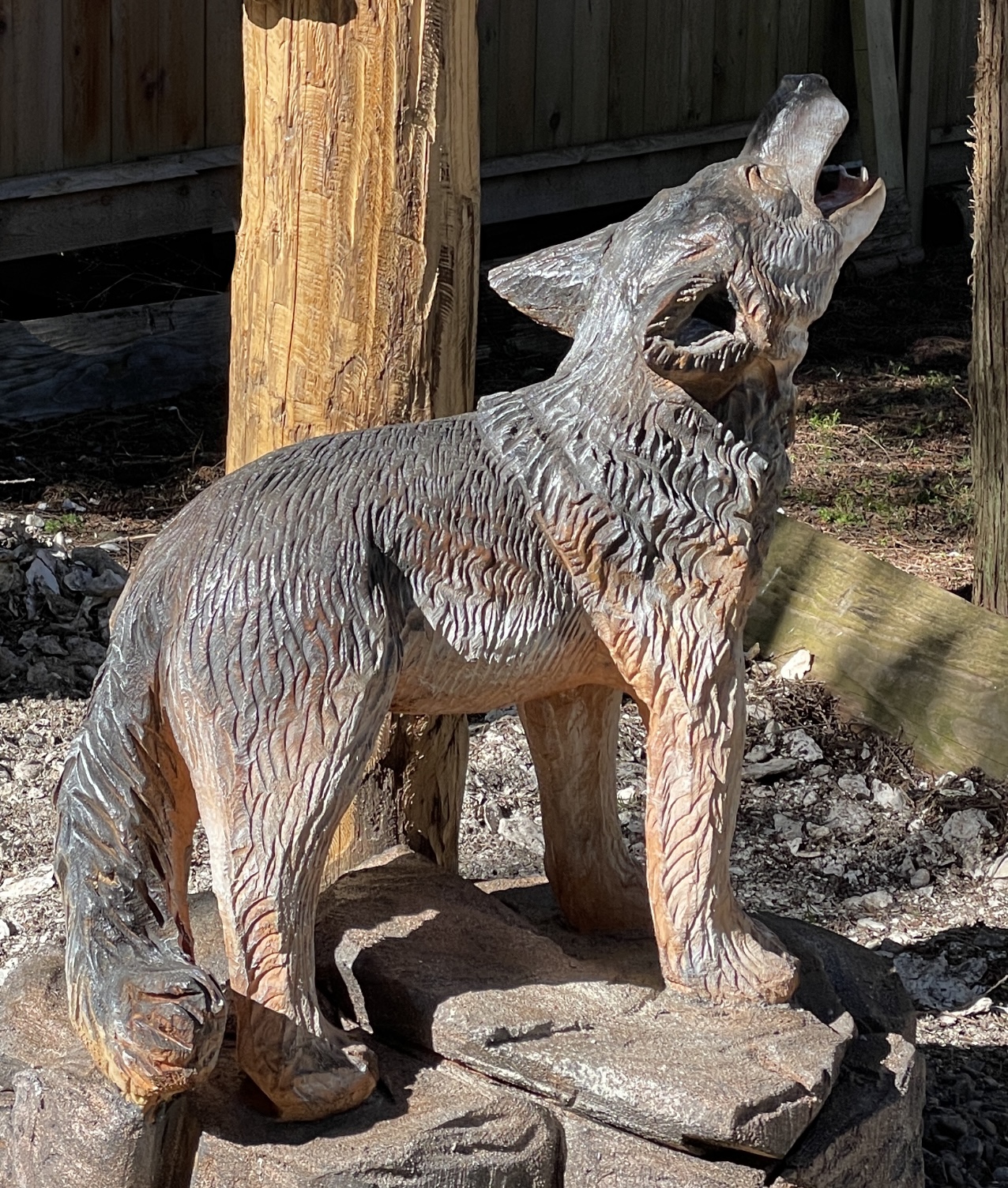 The BC government spent a decade killing wolves to protect caribou. Now, critics warn that despite questions about its effectiveness, ethics and impact on the rest of the environment, the government is moving to make the wolf cull a permanent part of its strategy. Launched as a short-term emergency measure in 2015, the decade-long wolf cull is a morally outrageous tactic to divert public attention from the root cause of caribou declines — the province’s failure to significantly address habitat destruction — said Pacific Wild co-founder Ian McAllister. …The future for caribou and wolves is looking even more dire given the federal and provincial plans to fast-track permitting and reduce environmental assessments for development, McAllister said. …The province is looking to make its “short-term emergency” measure of shooting wolves to protect caribou a permanent practice in lieu of protecting habitat, critics warn.
The BC government spent a decade killing wolves to protect caribou. Now, critics warn that despite questions about its effectiveness, ethics and impact on the rest of the environment, the government is moving to make the wolf cull a permanent part of its strategy. Launched as a short-term emergency measure in 2015, the decade-long wolf cull is a morally outrageous tactic to divert public attention from the root cause of caribou declines — the province’s failure to significantly address habitat destruction — said Pacific Wild co-founder Ian McAllister. …The future for caribou and wolves is looking even more dire given the federal and provincial plans to fast-track permitting and reduce environmental assessments for development, McAllister said. …The province is looking to make its “short-term emergency” measure of shooting wolves to protect caribou a permanent practice in lieu of protecting habitat, critics warn.
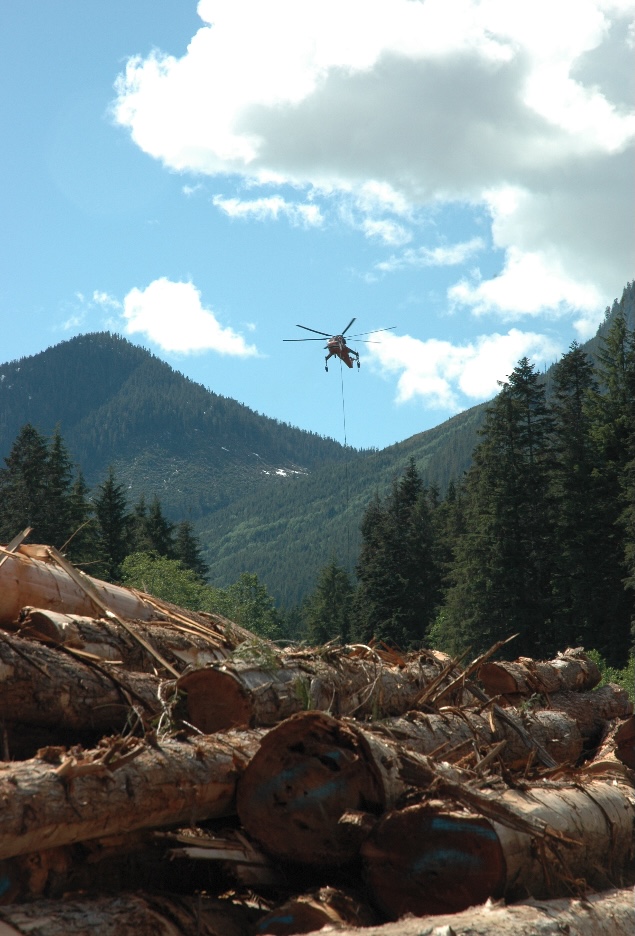 qathet Regional District’s planning committee is recommending the regional board express no objection to a Western Forest Products helicopter logging operation on Powell Lake. At the May 27 planning committee meeting, directors considered a recommendation to advise the provincial ministry of water, land and resource stewardship that the regional district has no objection to the crown land application for a licence of occupation for the purpose of industrial log handling and storage on the northern arm of the lake. Electoral Area A director and committee chair Jason Lennox said there was a detailed staff report on the application. “I’m in support of the recommendation,” said Lennox. “If you read the report, it’s a three-year activity for harvesting into the lake. You will see the different due diligence pieces in there around mitigation measures to the environment; the Powell Region Cabin Owners Association was consulted as well.
qathet Regional District’s planning committee is recommending the regional board express no objection to a Western Forest Products helicopter logging operation on Powell Lake. At the May 27 planning committee meeting, directors considered a recommendation to advise the provincial ministry of water, land and resource stewardship that the regional district has no objection to the crown land application for a licence of occupation for the purpose of industrial log handling and storage on the northern arm of the lake. Electoral Area A director and committee chair Jason Lennox said there was a detailed staff report on the application. “I’m in support of the recommendation,” said Lennox. “If you read the report, it’s a three-year activity for harvesting into the lake. You will see the different due diligence pieces in there around mitigation measures to the environment; the Powell Region Cabin Owners Association was consulted as well. British Columbia’s forests are home to a diverse range of wildlife species, which play a significant role in the ecology of a living forest. At the Forest Enhancement Society of BC, we recognize that responsible forest management plays a crucial role in enhancing wildlife habitat and supporting biodiversity. Because of this, one of our key purposes as an organization is to help improve wildlife habitat within B.C.’s forests. Collaborating with the Habitat Conservation Trust Foundation we have supported over 100 wildlife habitat enhancement projects restoring forest health and evaluating the habitat and wildlife response to fire… In this newsletter: Tick Safety from the BC Forest Safety Council; An interview with Thomas Sullivan, Applied Mammal Research Institute; 64 newly funded forest enhancement projects; Lower Nicola Indian Band wildfire risk reduction; and a UBC Faculty of Forestry survey explores interest in international tours.
British Columbia’s forests are home to a diverse range of wildlife species, which play a significant role in the ecology of a living forest. At the Forest Enhancement Society of BC, we recognize that responsible forest management plays a crucial role in enhancing wildlife habitat and supporting biodiversity. Because of this, one of our key purposes as an organization is to help improve wildlife habitat within B.C.’s forests. Collaborating with the Habitat Conservation Trust Foundation we have supported over 100 wildlife habitat enhancement projects restoring forest health and evaluating the habitat and wildlife response to fire… In this newsletter: Tick Safety from the BC Forest Safety Council; An interview with Thomas Sullivan, Applied Mammal Research Institute; 64 newly funded forest enhancement projects; Lower Nicola Indian Band wildfire risk reduction; and a UBC Faculty of Forestry survey explores interest in international tours. The Red Flag Warning has been sounded by Alberta Wildfire. But what does it mean? It means conditions are ripe for the ignition and fast-moving spread of wildfires. The forest-fire experts use a sliding scale, first adopted by the U.S. National Weather Service, to determine how dry the conditions are in the forest areas, and how the wind could help fan the flames if that dry tinder is ignited. Basically, a score is calculated based on wind speed, heat and the lack of humidity. A sample document provided by Alberta Wildfire shows a hypothetical watch being created when the maximum daily temperatures is expected to hit 33 Celsius, the humidity is at 25 per cent or lower, and wind speeds are 10 km/h. Basically, when it is punishingly hot and dry, it doesn’t take a lot of wind to trigger an alert. “And, just like weather alerts, “watch” is one level below “warning.”
The Red Flag Warning has been sounded by Alberta Wildfire. But what does it mean? It means conditions are ripe for the ignition and fast-moving spread of wildfires. The forest-fire experts use a sliding scale, first adopted by the U.S. National Weather Service, to determine how dry the conditions are in the forest areas, and how the wind could help fan the flames if that dry tinder is ignited. Basically, a score is calculated based on wind speed, heat and the lack of humidity. A sample document provided by Alberta Wildfire shows a hypothetical watch being created when the maximum daily temperatures is expected to hit 33 Celsius, the humidity is at 25 per cent or lower, and wind speeds are 10 km/h. Basically, when it is punishingly hot and dry, it doesn’t take a lot of wind to trigger an alert. “And, just like weather alerts, “watch” is one level below “warning.”
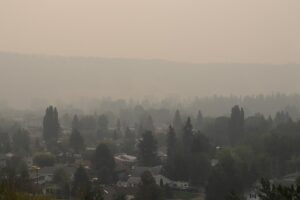 As dozens of wildfires continue to burn across Canada, flames are sending far-reaching plumes of smoke into the sky and unhealthy air to distant places. Some of the more gigantic blazes have been delivering thick smoke that spread southward into the United States over recent days. The fires are burning from British Columbia, through Alberta and Saskatchewan to Manitoba and Ontario — with several between 100,000 and 300,000 hectares apiece. More smoky skies are expected as this week begins, although the smoke is not expected to be as thick as it’s been in recent days. Prime fire season in Canada is just beginning, though already about half a year’s worth of land has been scorched, according to the long-term average. [a paid subscription is required to read this article]
As dozens of wildfires continue to burn across Canada, flames are sending far-reaching plumes of smoke into the sky and unhealthy air to distant places. Some of the more gigantic blazes have been delivering thick smoke that spread southward into the United States over recent days. The fires are burning from British Columbia, through Alberta and Saskatchewan to Manitoba and Ontario — with several between 100,000 and 300,000 hectares apiece. More smoky skies are expected as this week begins, although the smoke is not expected to be as thick as it’s been in recent days. Prime fire season in Canada is just beginning, though already about half a year’s worth of land has been scorched, according to the long-term average. [a paid subscription is required to read this article] A new
A new  Washington, D.C. – U.S. Secretary of Agriculture Brooke Rollins announced a bold $200 million investment to implement the U. S. Department of Agriculture (USDA) Forest Service’s National Active Forest Management Strategy, a key initiative to increase timber harvest, improve forest health and productivity, reduce wildfire risk, and support rural prosperity in forest communities. The strategy supports President Trump’s Executive Order: Immediate Expansion of Timber Production by streamlining burdensome regulations, leveraging emergency authorities, and expediting project approvals—ensuring faster access to critical timber resources. Increasing the use of long-term contracts to carry out these projects, the strategy envisions a more stable supply of wood products, healthier forests, and stronger rural economies. “Trump is committed to cutting red tape, rolling back burdensome regulations and unleashing the potential of America’s abundant natural resources. This is a win for … forest management which will help keep our forests safer and reduce wildfire risk,” said Secretary Rollins.
Washington, D.C. – U.S. Secretary of Agriculture Brooke Rollins announced a bold $200 million investment to implement the U. S. Department of Agriculture (USDA) Forest Service’s National Active Forest Management Strategy, a key initiative to increase timber harvest, improve forest health and productivity, reduce wildfire risk, and support rural prosperity in forest communities. The strategy supports President Trump’s Executive Order: Immediate Expansion of Timber Production by streamlining burdensome regulations, leveraging emergency authorities, and expediting project approvals—ensuring faster access to critical timber resources. Increasing the use of long-term contracts to carry out these projects, the strategy envisions a more stable supply of wood products, healthier forests, and stronger rural economies. “Trump is committed to cutting red tape, rolling back burdensome regulations and unleashing the potential of America’s abundant natural resources. This is a win for … forest management which will help keep our forests safer and reduce wildfire risk,” said Secretary Rollins.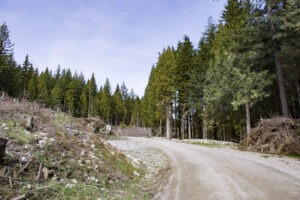 As the Forest Service contracts with slashed staff and funding, local communities are stepping up with funding for backcountry trail crews, visitor education campaigns and management of campsites and trailheads. “These folks need help. We know how important it is to have a physical human presence out there,” said Dave Ochs, the head of the Crested Butte Mountain Bike Association, which is administering $62,500 in local funding to support three seasonal Forest Service employees around Crested Butte. “Let’s help our partners. They are in need and we care very much for our backyard.” This is a scene unfolding across Colorado’s public lands as communities labor to fill gaps left by the sudden retraction of the federal government under the Trump Administration.
As the Forest Service contracts with slashed staff and funding, local communities are stepping up with funding for backcountry trail crews, visitor education campaigns and management of campsites and trailheads. “These folks need help. We know how important it is to have a physical human presence out there,” said Dave Ochs, the head of the Crested Butte Mountain Bike Association, which is administering $62,500 in local funding to support three seasonal Forest Service employees around Crested Butte. “Let’s help our partners. They are in need and we care very much for our backyard.” This is a scene unfolding across Colorado’s public lands as communities labor to fill gaps left by the sudden retraction of the federal government under the Trump Administration. The proposed development and expansion of Grand Targhee Resort may require the removal of about 456 whitebark pine trees. At the level of detail in the environmental impact statement released last month, it’s unclear whether some projects can be amended to save trees within the project area. It’s also unclear how many of the trees within the project area are mature, cone-bearing trees necessary for the species’ reproduction. Caribou-Targhee National Forest officials, who are reviewing Targhee’s expansion plans, said the 456-tree estimate is likely high. In past projects, Teton Basin District Ranger Jay Pence said, “Grand Targhee and the Forest Service [have] routinely been able to shift some of the disturbances to avoid whitebark pine stands.”.. Whitebark were listed as “threatened” by the U.S. Fish and Wildlife Service in 2023. But its Endangered Species Act protections do not prohibit them from being hewn.
The proposed development and expansion of Grand Targhee Resort may require the removal of about 456 whitebark pine trees. At the level of detail in the environmental impact statement released last month, it’s unclear whether some projects can be amended to save trees within the project area. It’s also unclear how many of the trees within the project area are mature, cone-bearing trees necessary for the species’ reproduction. Caribou-Targhee National Forest officials, who are reviewing Targhee’s expansion plans, said the 456-tree estimate is likely high. In past projects, Teton Basin District Ranger Jay Pence said, “Grand Targhee and the Forest Service [have] routinely been able to shift some of the disturbances to avoid whitebark pine stands.”.. Whitebark were listed as “threatened” by the U.S. Fish and Wildlife Service in 2023. But its Endangered Species Act protections do not prohibit them from being hewn.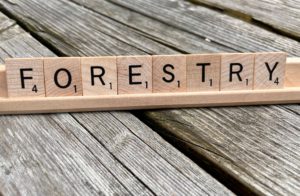
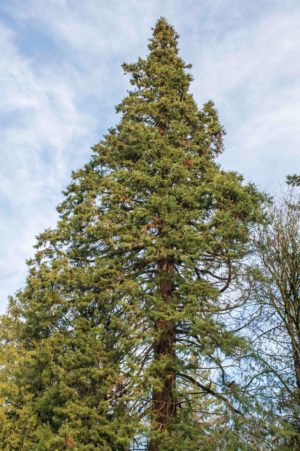 The federal government is awarding Utah $3 million to purchase conservation easements in southern Utah near Zion National Park. The funding — awarded to the Utah Division of Forestry, Fire and State Lands by the U.S. Department of Agriculture — was announced Monday and will go toward ongoing forest preservation efforts outside of the national park. Called the Zion Connectivity Project, the state will direct the funding at two properties totalling 766 acres near the north section of the national park. A conservation easement — a legally binding agreement between a landowner and government that places restrictions on the land for environmental purposes — will prevent the land from being fragmented or developed. That will help preserve the ecologically rich stretch of forest. Old-growth ponderosa pines, some of them hundreds of years old, can be found in the area.
The federal government is awarding Utah $3 million to purchase conservation easements in southern Utah near Zion National Park. The funding — awarded to the Utah Division of Forestry, Fire and State Lands by the U.S. Department of Agriculture — was announced Monday and will go toward ongoing forest preservation efforts outside of the national park. Called the Zion Connectivity Project, the state will direct the funding at two properties totalling 766 acres near the north section of the national park. A conservation easement — a legally binding agreement between a landowner and government that places restrictions on the land for environmental purposes — will prevent the land from being fragmented or developed. That will help preserve the ecologically rich stretch of forest. Old-growth ponderosa pines, some of them hundreds of years old, can be found in the area.
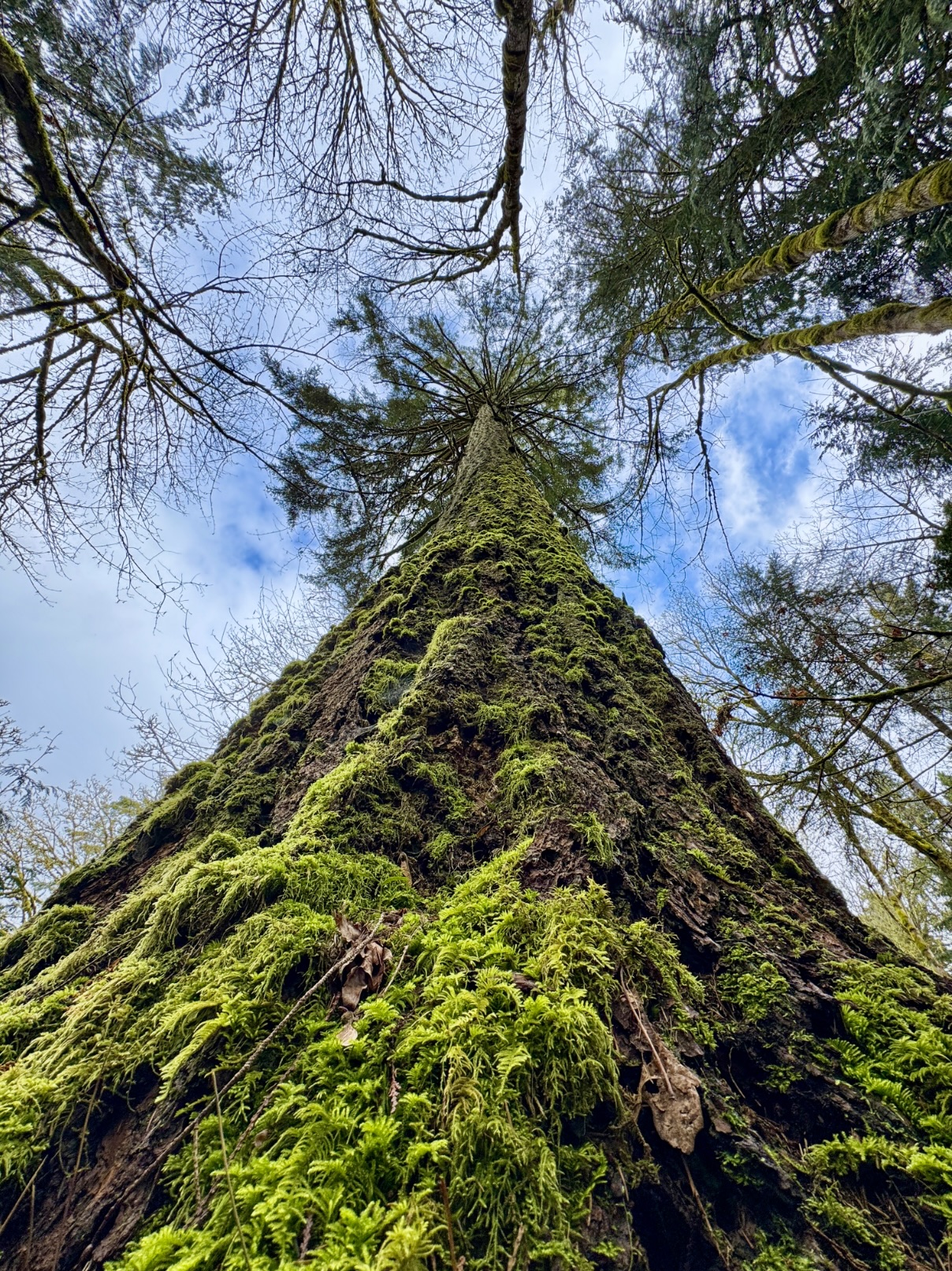 The Clallam County Superior Court denied environmentalists’ request for an administrative stay on two local Department of Natural Resources parcels, although it granted a motion to compel information from the state agency. If the stay had been granted, it would have barred logging-related activities for 90 days on the parcels named Parched and Tree Well. The motion to compel will require the Department of Natural Resources (DNR) to file administrative records relevant to the case by June 18 — a five-month delay from the original required date of Jan. 2. The logging rights for these two forests were bought by Oregon-based Murphy Company in December. The sale to the Eugene, Ore.-based Murphy Company was approved by the Washington State Board of Natural Resources in December. The Murphy Company is a more-than-a-century-old, family-owned wood products company based in Oregon, with a veneer mill in Elma.
The Clallam County Superior Court denied environmentalists’ request for an administrative stay on two local Department of Natural Resources parcels, although it granted a motion to compel information from the state agency. If the stay had been granted, it would have barred logging-related activities for 90 days on the parcels named Parched and Tree Well. The motion to compel will require the Department of Natural Resources (DNR) to file administrative records relevant to the case by June 18 — a five-month delay from the original required date of Jan. 2. The logging rights for these two forests were bought by Oregon-based Murphy Company in December. The sale to the Eugene, Ore.-based Murphy Company was approved by the Washington State Board of Natural Resources in December. The Murphy Company is a more-than-a-century-old, family-owned wood products company based in Oregon, with a veneer mill in Elma.
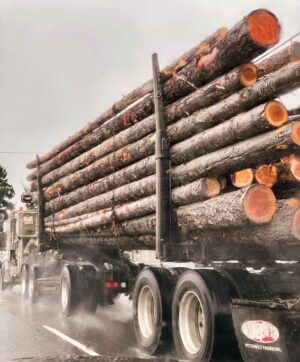
 Sawmills are working to recycle trees blown down by Hurricane Helene to assist wildland firefighters while boosting domestic timber production. Many of the trees downed by the storm are usable, according to Johnny Evans, owner of EvAns Lumber Co. in Manchester, Tennessee. About 6% of the lumber produced at his facility comes from trees that fell during natural disasters. The Tennessee Department of Agriculture’s Forestry Division estimated it could take at least three years for the thickest trees downed by Hurricane Helene to dry out enough to become potential wildfire fuel. However, those trees can still hinder firefighting efforts by getting in the way of bulldozers used to create firelines. “Those trees are there just blocking the dozers. So we have to send in crews to clear a path for the dozers,” Megan Carpenter, a spokesperson for the Tennessee Department of Agriculture’s Forestry Division, said.
Sawmills are working to recycle trees blown down by Hurricane Helene to assist wildland firefighters while boosting domestic timber production. Many of the trees downed by the storm are usable, according to Johnny Evans, owner of EvAns Lumber Co. in Manchester, Tennessee. About 6% of the lumber produced at his facility comes from trees that fell during natural disasters. The Tennessee Department of Agriculture’s Forestry Division estimated it could take at least three years for the thickest trees downed by Hurricane Helene to dry out enough to become potential wildfire fuel. However, those trees can still hinder firefighting efforts by getting in the way of bulldozers used to create firelines. “Those trees are there just blocking the dozers. So we have to send in crews to clear a path for the dozers,” Megan Carpenter, a spokesperson for the Tennessee Department of Agriculture’s Forestry Division, said.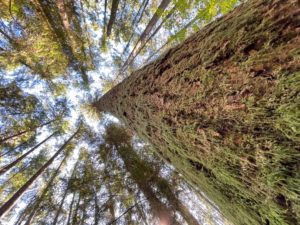 MAINE, USA — A law signed by Gov. Janet Mills last week requires landowners who are participating in the forest carbon credit market to report basic data — including a landowner’s name, contact information, date of enrollment and total enrolled acreage — to the state on an annual basis, information the state will use to create a database and track the impact of carbon credits on Maine’s forests. “We need to understand how Maine woodland owners are participating in the emerging forest carbon market, given both Maine’s forest-based economy and its climate change initiatives,” said Morten Moesswilde, the division director of Forest Policy and Management for the Department of Agriculture, Conservation and Forestry, in a work session on the legislation in February. …The law was supported by conservation organizations as well as the Maine Forest Products Council and several woodlot owners, who stressed the importance of understanding an emerging market.
MAINE, USA — A law signed by Gov. Janet Mills last week requires landowners who are participating in the forest carbon credit market to report basic data — including a landowner’s name, contact information, date of enrollment and total enrolled acreage — to the state on an annual basis, information the state will use to create a database and track the impact of carbon credits on Maine’s forests. “We need to understand how Maine woodland owners are participating in the emerging forest carbon market, given both Maine’s forest-based economy and its climate change initiatives,” said Morten Moesswilde, the division director of Forest Policy and Management for the Department of Agriculture, Conservation and Forestry, in a work session on the legislation in February. …The law was supported by conservation organizations as well as the Maine Forest Products Council and several woodlot owners, who stressed the importance of understanding an emerging market. A quarter of a Welsh city will be covered by tree canopies within 10 years due to a new plan to boost its “urban forest”. Almost 30,000 trees will be planted in Newport to supplement about 250,000 existing trees. Wales was the first country in the world to measure its urban tree coverage. The council hopes these trees and others planted by private developers and landowners will take canopy cover in Newport – which at 18% had the highest proportion of any Welsh city in 2016 – to 25%. Joanne Gossage, service manager for environment and leisure at Newport council said the city had “green oasis” parks. She said: “We feel that Newport is a very green city and we don’t think it’s too far of a stretch to get to that 25%. “People’s perception of an urban forest is something dark, perhaps menacing and dingy. It’s not. It’s about trees making attractive frameworks in limited open space.”
A quarter of a Welsh city will be covered by tree canopies within 10 years due to a new plan to boost its “urban forest”. Almost 30,000 trees will be planted in Newport to supplement about 250,000 existing trees. Wales was the first country in the world to measure its urban tree coverage. The council hopes these trees and others planted by private developers and landowners will take canopy cover in Newport – which at 18% had the highest proportion of any Welsh city in 2016 – to 25%. Joanne Gossage, service manager for environment and leisure at Newport council said the city had “green oasis” parks. She said: “We feel that Newport is a very green city and we don’t think it’s too far of a stretch to get to that 25%. “People’s perception of an urban forest is something dark, perhaps menacing and dingy. It’s not. It’s about trees making attractive frameworks in limited open space.”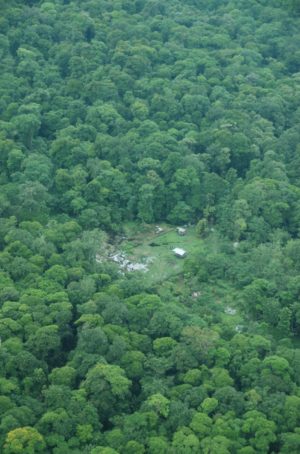 Around the world, nefarious state and nonstate actors are extracting enormous value from forests to fund their operations. The unlawful clearing of land and the harvest, transport, purchase, and sale of timber and related commodities have long been dismissed as a niche concern of environmental activists. But this is a mistake. Although unsustainable deforestation imperils the environment, illegal logging also poses an outsize—and underacknowledged—geopolitical threat. Environmental crime constitutes a growing economic and national security threat to the United States and countries around the world. Yet Washington has largely ignored illegal logging’s role in its fight against transnational criminal organizations, drug cartels, terrorists, and rogue regimes, as well as China’s part in this illicit trade. Thankfully, the blueprint for fighting transnational crime already exists: better cooperation among governments, increased enforcement, more transparent supply chains, public-private partnerships, and most important, following the money.
Around the world, nefarious state and nonstate actors are extracting enormous value from forests to fund their operations. The unlawful clearing of land and the harvest, transport, purchase, and sale of timber and related commodities have long been dismissed as a niche concern of environmental activists. But this is a mistake. Although unsustainable deforestation imperils the environment, illegal logging also poses an outsize—and underacknowledged—geopolitical threat. Environmental crime constitutes a growing economic and national security threat to the United States and countries around the world. Yet Washington has largely ignored illegal logging’s role in its fight against transnational criminal organizations, drug cartels, terrorists, and rogue regimes, as well as China’s part in this illicit trade. Thankfully, the blueprint for fighting transnational crime already exists: better cooperation among governments, increased enforcement, more transparent supply chains, public-private partnerships, and most important, following the money.
 This study investigates the role of Forest Stewardship Council (FSC) certification in advancing sustainable forest management and influencing forest cover changes across 70 countries from 2000 to 2021. Using dynamic panel data model and Generalized Method of Moments (GMM) estimations, the analysis addresses endogeneity concerns, such as those stemming from lagged dependent variables, providing robust and unbiased estimates. Results indicate that FSC certification significantly enhances forest cover, with the most pronounced effects observed in low- and middle-income countries. Additionally, the study explores how FSC certification interacts with income levels and climatic conditions, revealing region-specific variations in its effects. These findings highlight the importance of market-based conservation tools, such as FSC certification, which align economic incentives with sustainability objectives. The analysis provides practical insights, recommending the integration of FSC certification into responsible trade practices and the development of regionally tailored forest management strategies to maximize conservation outcomes.
This study investigates the role of Forest Stewardship Council (FSC) certification in advancing sustainable forest management and influencing forest cover changes across 70 countries from 2000 to 2021. Using dynamic panel data model and Generalized Method of Moments (GMM) estimations, the analysis addresses endogeneity concerns, such as those stemming from lagged dependent variables, providing robust and unbiased estimates. Results indicate that FSC certification significantly enhances forest cover, with the most pronounced effects observed in low- and middle-income countries. Additionally, the study explores how FSC certification interacts with income levels and climatic conditions, revealing region-specific variations in its effects. These findings highlight the importance of market-based conservation tools, such as FSC certification, which align economic incentives with sustainability objectives. The analysis provides practical insights, recommending the integration of FSC certification into responsible trade practices and the development of regionally tailored forest management strategies to maximize conservation outcomes.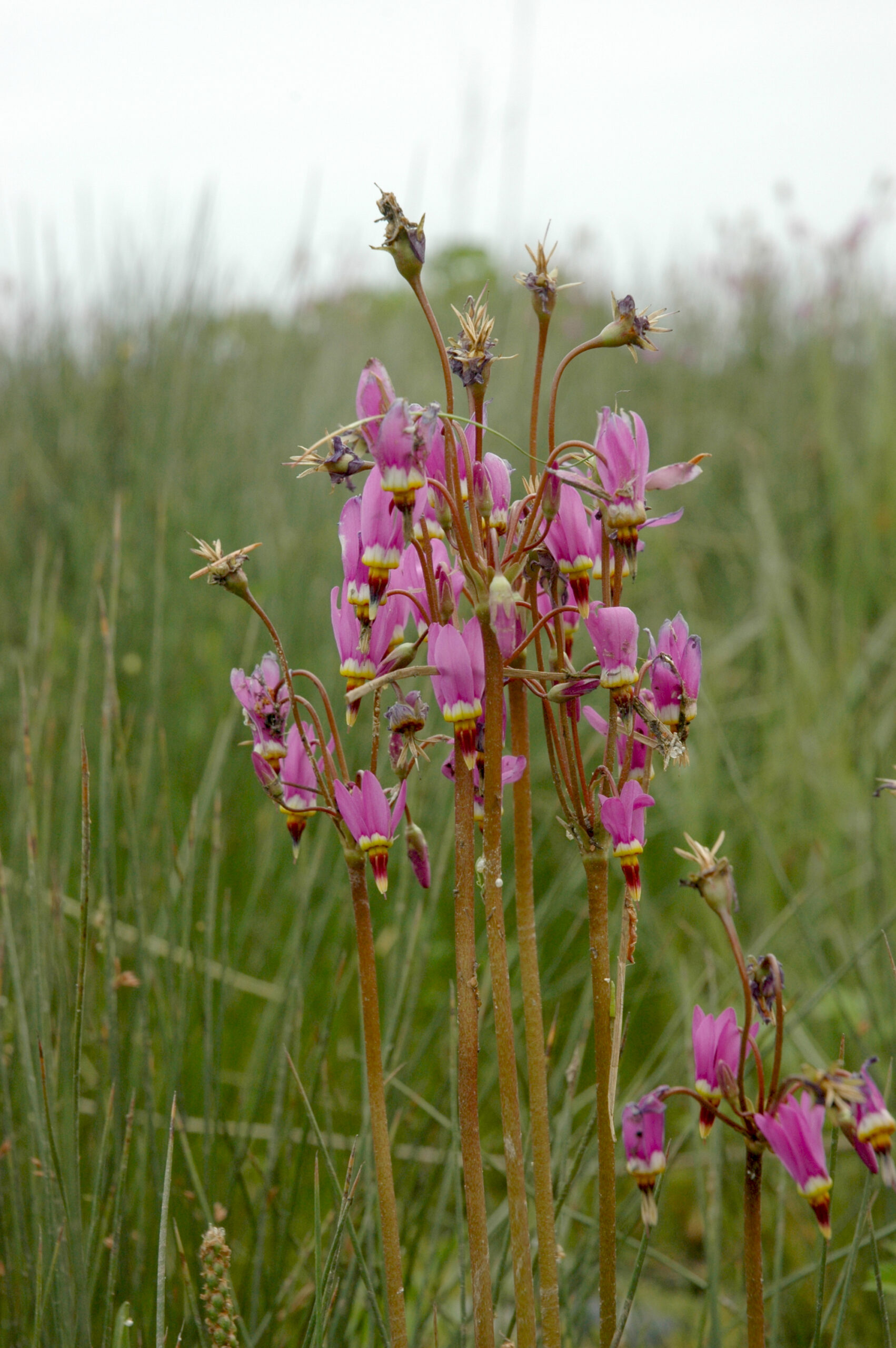 As efforts to combat deforestation intensify, attention is shifting to the sustainable use of forests. In Europe, non-wood forest products (NWFPs) are emerging as valuable, biodiversity-friendly alternatives. …In response, the EU has adopted a deforestation-free regulation, requiring companies to ensure products entering the European market are not linked to deforestation or forest degradation, while also respecting human rights and indigenous land. In FAO’s assessment of the state of the world’s forests in 2024, wood-based goods have historically dominated forest product production and trade, serving as the primary source of income and employment in forestry. …Amid growing awareness of forests’ broader ecological and economic roles, attention is shifting towards NWFPs, which are increasingly seen as sustainable and profitable alternatives. Although still secondary in trade value, NWFPS (medicinal plants, fruits, and resins) are gaining relevance as societies seek more diverse and ecologically responsible uses of forest resources.
As efforts to combat deforestation intensify, attention is shifting to the sustainable use of forests. In Europe, non-wood forest products (NWFPs) are emerging as valuable, biodiversity-friendly alternatives. …In response, the EU has adopted a deforestation-free regulation, requiring companies to ensure products entering the European market are not linked to deforestation or forest degradation, while also respecting human rights and indigenous land. In FAO’s assessment of the state of the world’s forests in 2024, wood-based goods have historically dominated forest product production and trade, serving as the primary source of income and employment in forestry. …Amid growing awareness of forests’ broader ecological and economic roles, attention is shifting towards NWFPs, which are increasingly seen as sustainable and profitable alternatives. Although still secondary in trade value, NWFPS (medicinal plants, fruits, and resins) are gaining relevance as societies seek more diverse and ecologically responsible uses of forest resources. On May 22, the European Commission released its long-awaited country benchmarking classifications under the EU Deforestation Regulation (EUDR). …After years of development, one might have expected a risk classification tool robust enough to help companies navigate the complex terrain of global sourcing. Instead, the rankings are poised to mislead businesses into thinking certain countries are “low risk” when the realities on the ground tell a very different story. …The EUDR sets out dual requirements: products placed on or exported from the EU market must be both “deforestation-free” and “produced in compliance with the laws of the country of origin.” However, the EC’s benchmarking appears to focus overwhelmingly on deforestation metrics and existing EU political sanctions—giving little attention to equally critical issues like governance, corruption, and law enforcement capacity. Findings from Forest Trends’
On May 22, the European Commission released its long-awaited country benchmarking classifications under the EU Deforestation Regulation (EUDR). …After years of development, one might have expected a risk classification tool robust enough to help companies navigate the complex terrain of global sourcing. Instead, the rankings are poised to mislead businesses into thinking certain countries are “low risk” when the realities on the ground tell a very different story. …The EUDR sets out dual requirements: products placed on or exported from the EU market must be both “deforestation-free” and “produced in compliance with the laws of the country of origin.” However, the EC’s benchmarking appears to focus overwhelmingly on deforestation metrics and existing EU political sanctions—giving little attention to equally critical issues like governance, corruption, and law enforcement capacity. Findings from Forest Trends’ 
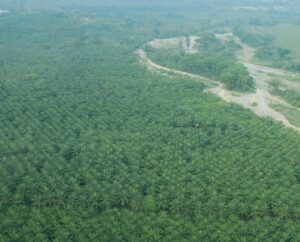 BRAZIL — Fallen logs are rotting, the trees grow sparser and the temperature rises in places sunlight hits the ground. This is what 24 years of severe drought looks like in the world’s largest rainforest. But this patch of degraded forest, about the size of a soccer field, is a scientific experiment. Launched in 2000 by Brazilian and British scientists, Esecaflor — short for “Forest Drought Study Project” in Portuguese— set out to simulate a future in which the changing climate could deplete the Amazon of rainfall. It is the longest-running project of its kind in the world, and has become a source for dozens of academic articles. …This resulted in the loss of approximately 40% of the total weight of the vegetation and the carbon stored within it from the plot. The main findings were detailed in
BRAZIL — Fallen logs are rotting, the trees grow sparser and the temperature rises in places sunlight hits the ground. This is what 24 years of severe drought looks like in the world’s largest rainforest. But this patch of degraded forest, about the size of a soccer field, is a scientific experiment. Launched in 2000 by Brazilian and British scientists, Esecaflor — short for “Forest Drought Study Project” in Portuguese— set out to simulate a future in which the changing climate could deplete the Amazon of rainfall. It is the longest-running project of its kind in the world, and has become a source for dozens of academic articles. …This resulted in the loss of approximately 40% of the total weight of the vegetation and the carbon stored within it from the plot. The main findings were detailed in